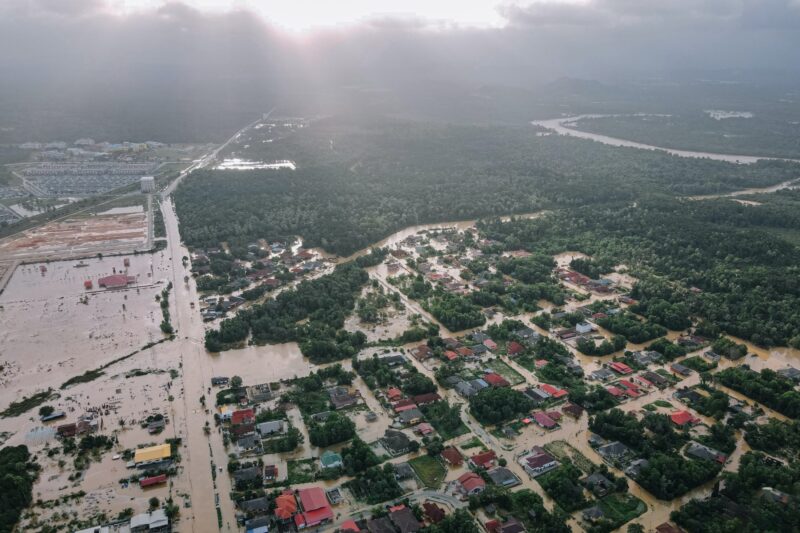Climate change is here now – we need to talk about adaptation
Share

Some people justify insufficient action to reduce greenhouse gas emissions by arguing that there may be an economically ‘optimal’ amount of climate change that we can cope with. Relying on such assumption allows us to continue burning fossil fuels, and delay the transformation needed to get our emissions to zero and limit global warming to 1.5°C.
The past weeks and months have been a wake-up call for this kind of thinking.
So far, 2021 has seen a summer of climate extremes in the Northern Hemisphere, bringing even the most developed and seemingly well-prepared nations to their knees.
Countries in western Europe (Germany, Belgium and the Netherlands and others), as well as India and China were hit with unprecedented and catastrophic flooding, killing over 600 people. Thousands are left homeless and the areas are devastated with power cuts and infrastructure collapse.
In contrast, some parts of the world (e.g. Greece, Turkey, Finland, India, Northwestern USA and Canada) have suffered from wildfires and unprecedented temperatures attributed to human activity this summer.
This is only a small part of the picture. Many nations around the globe, regardless of their development or preparedness status, face similar climate impacts which affect millions of people.
Climate change is here now
In the last years, as we have witnessed increasing extreme events fuelled by climate change, it is slowly sinking in that even with action to reduce our emissions, adaptation measures are already urgently needed for many of our communities.
For example, the Climate Impact Explorer shows that the annual damage Germany faces from river flooding will likely increase by 72% if we simply follow current climate policies. Days with extreme precipitation, that would only occur every 10 years, are expected to double in Europe with every degree of warming. Higher temperatures will also lead to more frequent storms that move more slowly, increasing the risk of flash floods and significant damage.
It has been clear for years that science underestimates the scope of increasing extremes, as climate models perform better for the mean than for extremes. We also know that assumptions used for infrastructure design significantly underestimate the intensity of extreme precipitation events.
An immediate question follows: how can we prepare?
Transformational adaptation
Current efforts to adapt largely focus on preserving our world as we know it – taking a step-by-step approach to climate-proofing our lives. This is called incremental adaptation. However, it has limits.
In Germany, the North-Rhine Westphalia region where recent flooding hit the hardest, has invested in adaptation planning for over a decade, with clear reference to more frequent extreme flooding. Nonetheless, the region was unprepared for the scope of the recent events.
Fundamental change, often referred to as transformational adaptation, is required to reduce losses and cope with increasing climate extremes.
We will also have to accept that an increasing share of impacts will not be avoidable. Being prepared for the consequences of the unavoidable risks and taking measures to ensure we reduce loss of life will need to become part of the equation.
The scope of loss and damage from unavoidable impacts of extremes depends on how quickly we can reduce emissions and reach peak warming.
It’s no surprise then that our first step to prepare must be to reduce our emissions as fast as possible. The recent extremes are stark reminder that even the wealthiest nations are not prepared for the consequences of where we are now at 1.1°C of warming. Limiting warming to 1.5°C in line with the Paris Agreement is our only option to reduce ever growing risks in the future. The latest UN scientific report finds that while some human-caused climate change and related impacts are now irreversible, with immediate and bold action, the 1.5°C goal is still within reach.
Our analysis shows that investments of USD 1.4 trillion per year are needed between 2020 and 2024 to limit warming to 1.5°C. It sounds big, but is a fraction of what governments are spending under their Covid-19 recovery packages.
We also have to start properly funding adaptation, recognising that this work may require fundamental shifts in infrastructure and our behaviour. Flood walls, improved building standards, resilient infrastructure are all tools we have at our disposal now. But the access to funds to implement these measures is vital, especially in developing countries.
Climate finance will be a big topic at this years’ climate negotiations. Developed countries must deliver on the $100 billion per year by 2020 pledge they made to developing countries in Paris.
Wealthier nations, like Germany, where the government announced a total of at least 800 million euros in relief immediately after the devastating floods, are able to internally absorb some of the economic impacts. For countries already struggling with poverty alleviation, such investments are much harder or impossible to mobilise, with the potential to throw back development efforts by years.
Ensuring that the transformation of our societies includes dedicated support to the most vulnerable to prepare for extremes and to cope with loss and damage in line with the Paris Agreement, must be a central part of the global response to the climate crisis.











